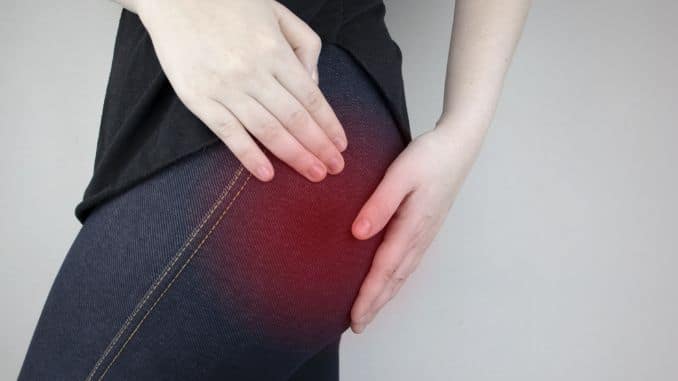
In Femoroacetabular impingement, extra bones grow along one or both of the bones that form the hip joint, which causes it to be irregularly shaped. Because of this, the bones do not fit each other, which causes them to rub against each other during movement. Over time, it creates friction that causes damage to the joint and leads to joint pain, swelling and inflammation, and limitation of range of motion. Read on to know more about Hip Impingement Exercises for Femoroacetabular Impingement.
Hip Anatomy
The hip is a ball-and-socket joint formed by two bones, the acetabulum, and the femoral head. The acetabulum is a part of the large pelvis bone, which acts as the socket, and the femoral head is the upper end of the femur, also known as the thigh bone, which acts as the ball. Together, they form the hip joint.
The surfaces of the ball and socket contain a slippery tissue called articular cartilage. It covers the bone’s surfaces to decrease friction and smoothen it to help the bones glide with each other during movement.
While a strong fibrocartilage rings the acetabulum called the labrum, which forms around the acetabulum to create a strong and tight seal for the femoral head and help provide stability to the joint.
Below is a photo that shows a healthy hip joint:

However, in femoroacetabular impingement (FAI), an extra bone grows around the acetabulum and femoral head, called bone spurs. This prevents the two bones from gliding with each other smoothly during movement. Over time, this can result in labral tears and the breakdown of the articular cartilage or a condition called osteoarthritis.
3 Types Of Femoroacetabular Impingement (FAI)
There are three types of femoroacetabular impingement, the pincer, cam, and combined impingement.
1. Pincer
In this impingement, the bone spur extends out over the normal rim of the acetabulum, and the labrum can be torn under the prominent rim of the acetabulum.
2. Cam
In this impingement, the femoral head is affected, causing it to be irregularly shaped instead of round shaped, which causes it to not rotate smoothly inside the acetabulum. This results in a bump that forms on the edge of the femoral head and grinds in the cartilage inside the acetabulum.
3. Combined Impingement
In this impingement, the pincer and cam type of FAI is present in the hip joint.
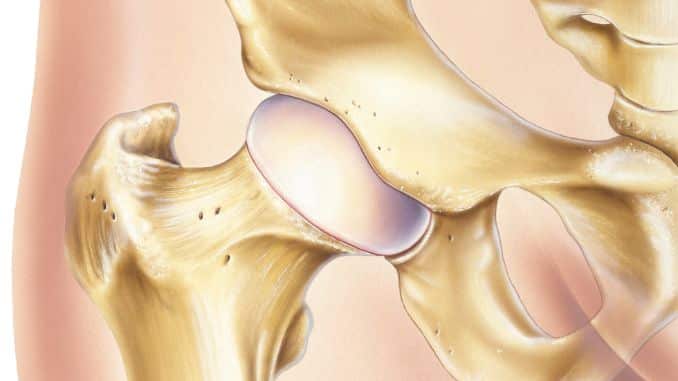
Causes Of Femoroacetabular Impingement (FAI)
The most common cause of FAI is when hip bones do not develop normally during childhood. Cam, pincer, or both can develop a bone spur that leads to joint damage, pain, and other symptoms of FAI.
Since this is due to abnormal bone growth, there is little to none that can be done to prevent FAI. Usually, some people may not know they have FAI until symptoms develop later. However, when this happens, there is already significant damage to the cartilage or labrum, and it usually already progresses. Athletes may also discover they have FAI earlier than those who are less active because they work the hip joint more and causing the symptoms to show early. Hip Impingement Exercises are advised.
Femoroacetabular Impingement (FAI) Symptoms
Symptoms of Femoroacetabular impingement (FAI) include dull aching pain in the hip or groin area, and upon turning, twisting or squatting, stiffness, limping, and limitation of range of motion.
Femoroacetabular Impingement (FAI) Treatment
There are two options for treatment, nonsurgical and surgical. Nonsurgical treatments include activity modifications, medications, and physical therapy, while surgical treatment includes arthroscopy.
-
Nonsurgical Treatment
Activity modifications: Your doctor may recommend you modify your daily activities to avoid activities that aggravate your symptoms and conditions.
-
Medications
Your doctor may recommend nonsteroidal anti-inflammatory medications such as ibuprofen to help reduce pain and inflammation.
-
Physical Therapy
Certain Hip Impingement Exercises can improve and prevent the limitation of the range of motion in your hips and strengthen the muscles to support your hip joint more which can reduce stress on the torn labrum or articular cartilage.
-
Surgical Treatment
If nonsurgical treatments don’t improve symptoms, doctors recommend surgery.
-
Arthroscopy
The most common surgical treatment for people with FAI problems is arthroscopic surgery. In this surgical procedure, the surgeon uses a small camera called an arthroscope and creates a small incision where the arthroscope passes to view the hip inside. During this, they can repair and clean out any damage to the labrum and articular cartilage. They can either trim the bony rim of the acetabulum or shave down the bump on the femoral head, or both. However, doctors may recommend performing an open operation with a larger incision in some severe cases to properly repair it.

Surgery is usually successful in reducing symptoms caused by femoroacetabular impingement. It can also prevent future damage to the hip joint. However, as with other surgeries, some damaged hips may not be completely fixed, especially if it is already severe and problems and other complications may develop in the future. It is always best to discuss with your doctor the best course of action.
Hip Impingement Exercises
I. Hip Stretching
1. Hip Flexor Stretch
On your affected side, place your knee on the floor and get into a half-kneeling position. Then, your other knee should be bent with your foot flat on the floor and in front of you. Slowly and gently shift your body and hips forward. Afterward, engage your core by drawing your belly button in and tightening your glute muscles. You should feel a gentle stretch in front of your affected hip. Hold this position for 30 seconds. And then, relax and return to the starting position. Complete 3-5 repetitions, 1 set. Lastly, repeat on the opposite side if necessary.
2. Piriformis Stretch
Firstly, lie on your back with your knees bent and feet flat on the floor. Secondly, cross the leg with the affected hip over your other knee and put it on your thigh just above the knee. Thirdly, hold the thigh of your unaffected hip and clasp your hands behind it. Fourthly, gently pull your leg towards your chest until you feel a gentle stretch in the back of your affected hip. Then, hold this position for 30 seconds. Afterward, relax and return to the starting position. Complete 3-5 repetitions, 1 set. Lastly, repeat on the opposite side if necessary.
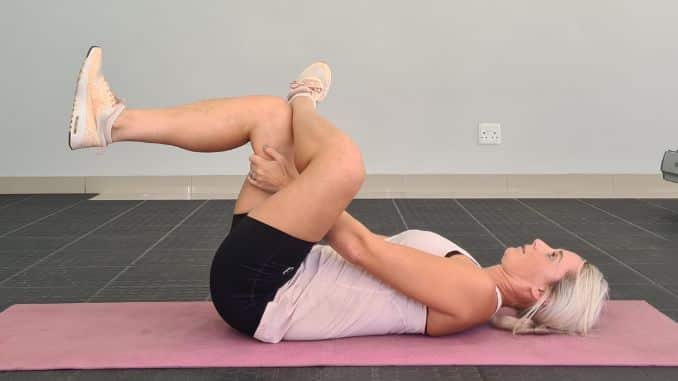
4. Groin Stretch
Sit on the floor with your back straight, bend your knees, and place the soles of your feet together. Then, gently allow your bent knees to fall towards the floor until you feel a gentle stretch on your inner thigh and groin. To feel the stretch more, you can lean your body forward. Hold this position for 30 seconds. Relax and return to the starting position. Lastly, complete 3-5 repetitions, 1 set.
II. Hip Strengthening
1. Hip Bridges
For this Hip Impingement Exercises, lie on your back on the floor with your knees bent and feet flat on the floor. Engage your core, then press on your heels to raise your hips off the floor until your shoulders, hips, and knees are aligned. Hold this position for 7 seconds. Relax and return it back down to the starting position. Complete 10 repetitions, 1 set.
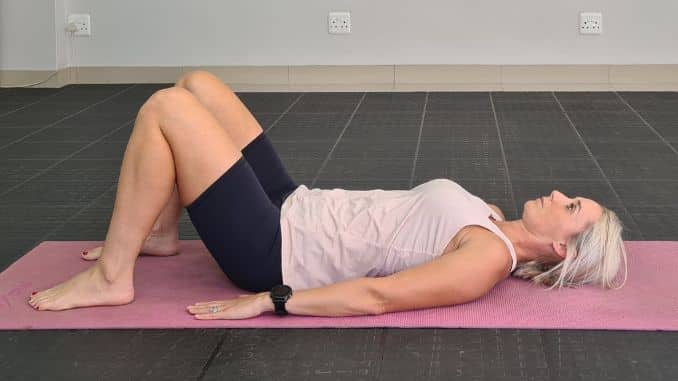
2. Straight Leg Raise
Lie on your back on the floor with your unaffected knee bent and your foot flat on the floor while the affected leg is extended. Raise your affected leg up and off the floor until both knees are aligned while keeping your leg extended. Hold this position for 7 seconds. Relax and return it back down to the starting position. Complete 10 repetitions, 1 set. Repeat on the opposite side if necessary.
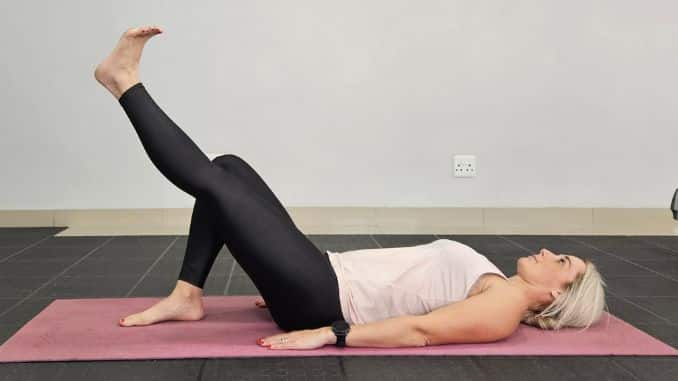
3. Single Leg Bridges
Lie on your back on the floor with your one knee bent and your foot flat on the floor. Raise your other leg up and off the floor until the knees are aligned with each other. Then raise your hips off the floor and engage your core until your shoulders, hips, and knees are in a straight line. Hold this position for 7 seconds. Relax and return it back down to the starting position. Complete 10 repetitions, 1 set. Repeat on the opposite side if necessary.
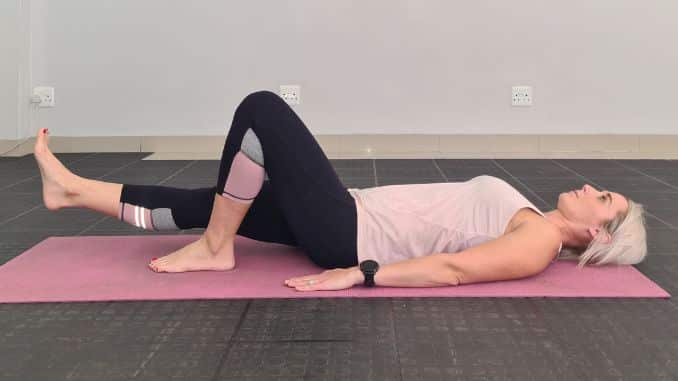 |
 |
4. Clamshell
Lie on your side with your unaffected hips and slightly bend your knees with your legs on top of each other. You may also prop your head with your elbow. Lift your top knee until it is parallel to your hip. Hold this position for 7 seconds. Relax and return it back down to the starting position. Complete 10 repetitions, 1 set.
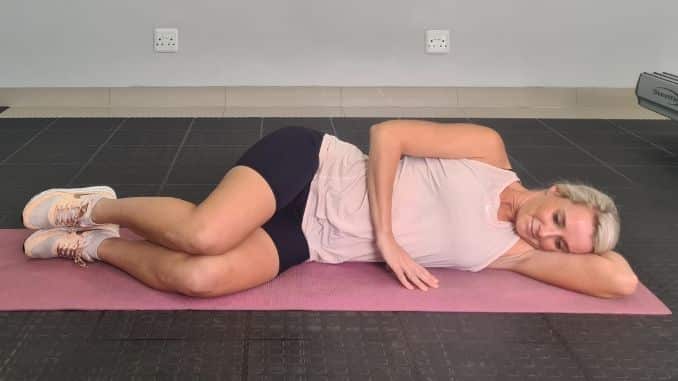 |
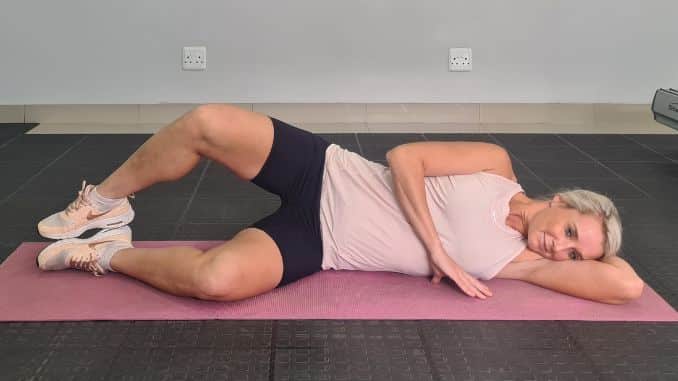 |
Outlook
Doctors have successfully treated many cases of Femoroacetabular Impingement (FAI). People who have this condition and have been treated by a doctor can usually live a long and active lifestyle without hip pain. It is best to discuss with your doctor the possible treatments suitable for your case.
Our hip flexors are the engine through which our bodies move. They control balance, our ability to sit, stand, twist, reach, bend, walk and step. Reduce Pain, Promote Weight Loss, Enhance Your Strength Training, And Increase Energy by Unlocking Your Hip Flexors!

